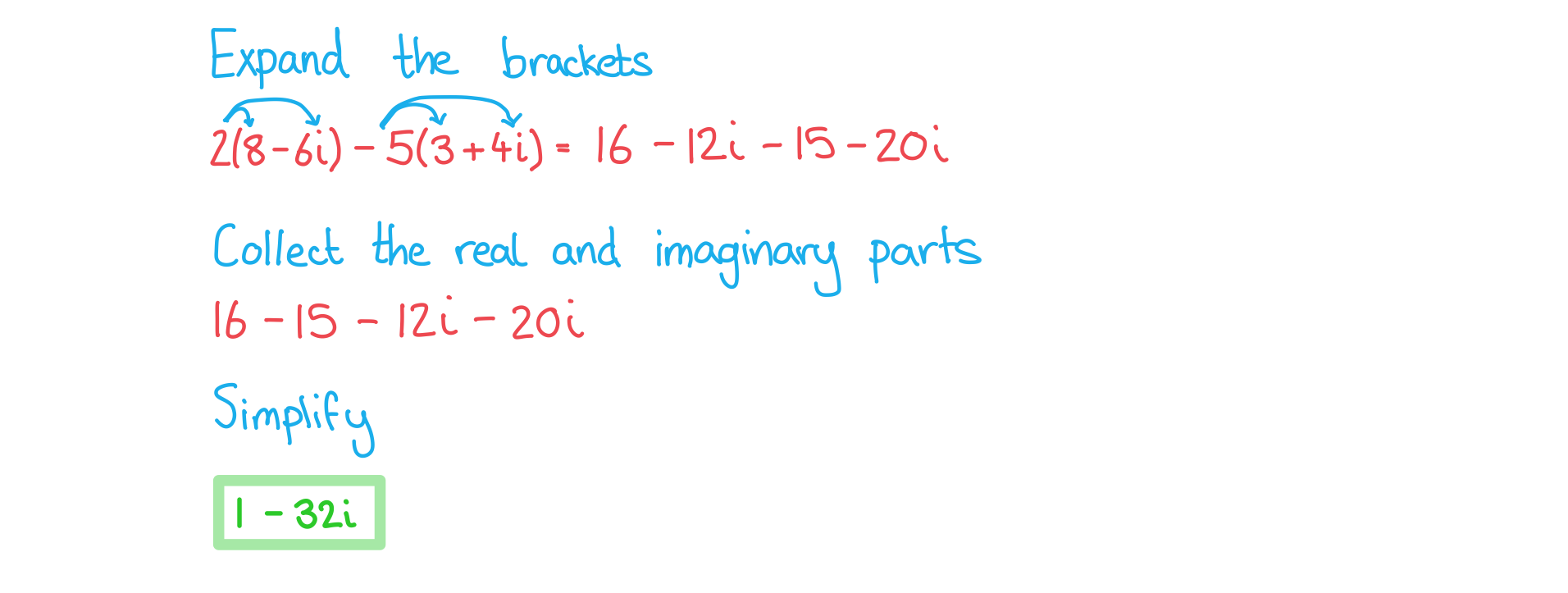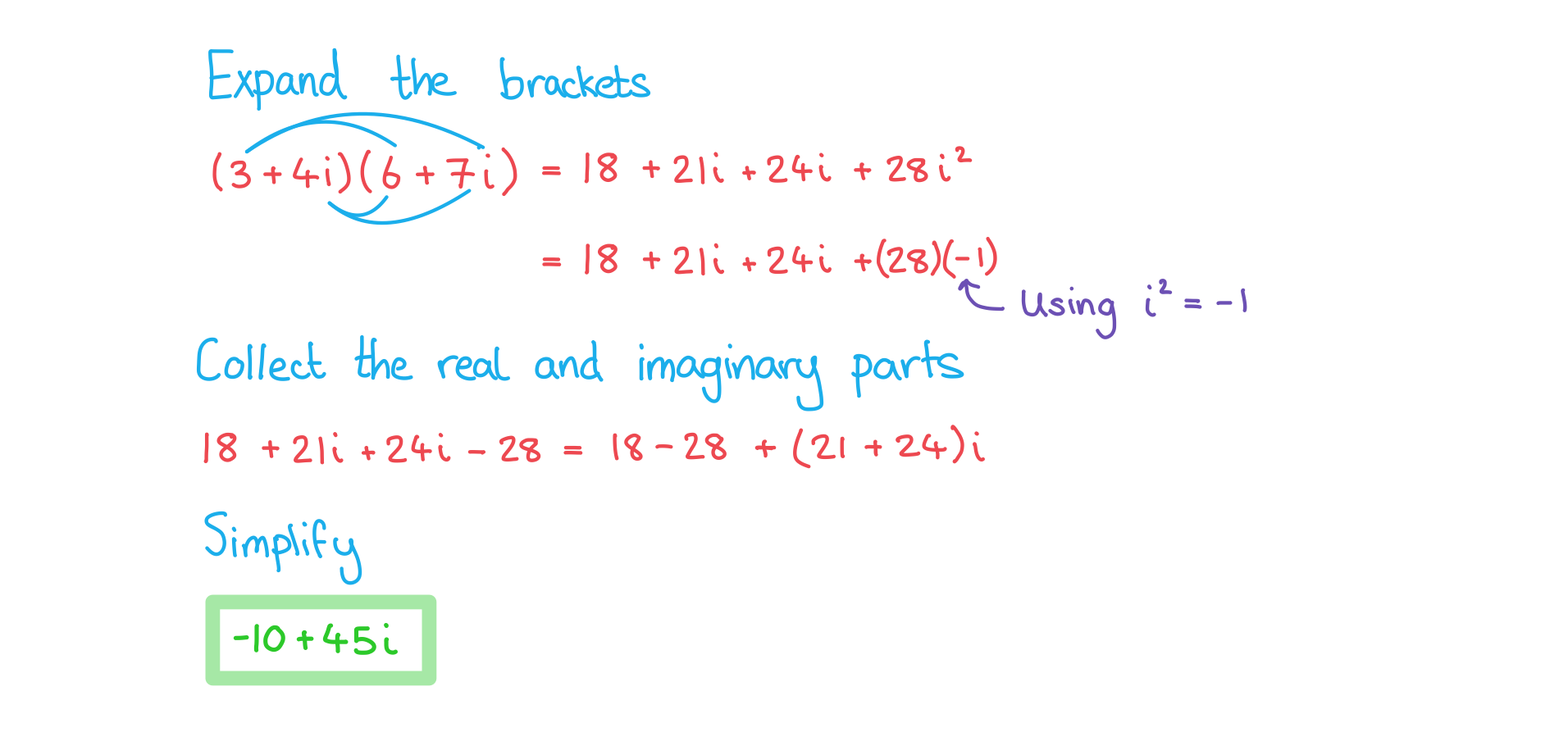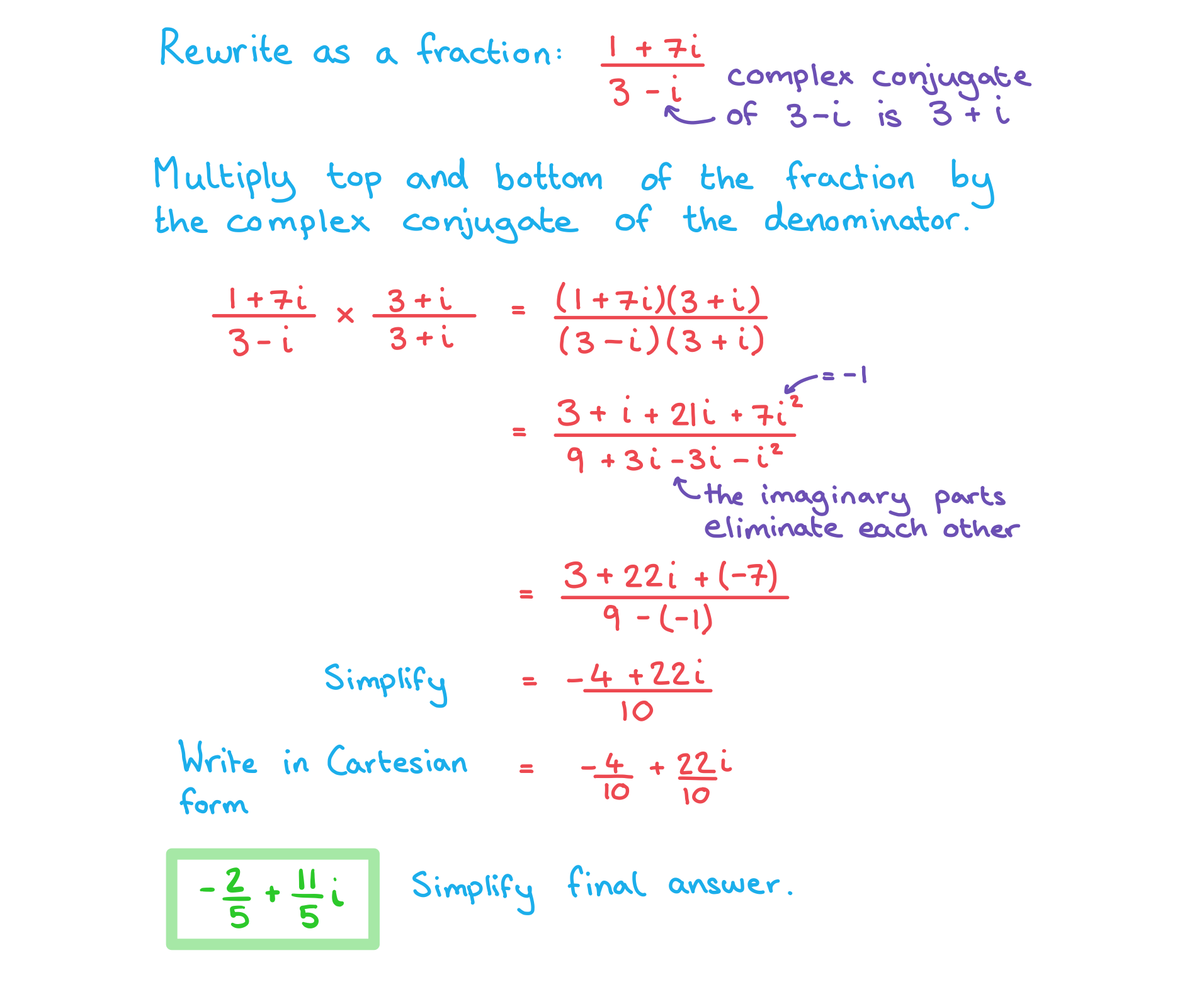Operations with Complex Numbers (DP IB Applications & Interpretation (AI)): Revision Note
Did this video help you?
Complex addition, subtraction & multiplication
How do I add and subtract complex numbers?
To add or subtract complex numbers, add or subtract their real and imaginary parts separately
e.g.
How do I multiply complex numbers?
To multiply
by
you need to expand brackets
just remember that
e.g.
gives
which simplifies to
Examiner Tips and Tricks
Your GDC can multiply two or more complex numbers together.
How do I find powers of i?
Because
, higher powers of
can be found as follows:
The powers of
form a sequence with period 4
Use index laws to find much higher powers
Just remember that
if
is even
if
is odd
Worked Example
(a) Simplify the expression .
Answer:

(b) Given two complex numbers and
, find
.
Answer:

Did this video help you?
Complex conjugation & division
What is a complex conjugate?
For the complex number
, the complex conjugate of
(written
) is
If
then
You will find that:
is always real
e.g.
is always imaginary
e.g.
or
is always real
e.g.
How do I divide complex numbers?
To divide two complex numbers, do the following:
STEP 1
Write the division as a fractionSTEP 2
Multiply the top and bottom of the fraction by the conjugate of the denominatorThis is similar to rationalising a denominator with surds
STEP 3
Add in brackets and multiply out the top and bottom, simplifying your answerThe denominator will always be real
STEP 4
Give your answer in the form requiredor in Cartesian form
if not specified
Examiner Tips and Tricks
Your GDC can divide two complex numbers.
Worked Example
Find the value of .
Answer:


Unlock more, it's free!
Did this page help you?